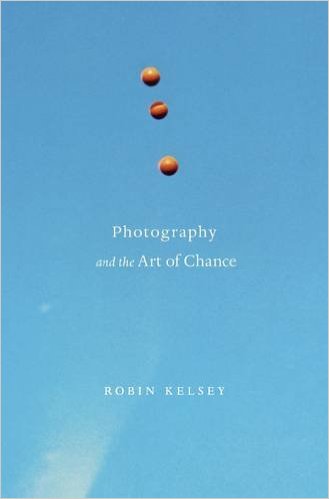A Handful of Dust by David CampanyThis is the catalogue for an exhibition I travelled to Paris to see only to be thwarted by an international terrorist incident. Given the nature of Campany's argument, that images of dust in all its forms pervade much of modern art (and can be traced back to Man Ray's photograph of Duchamp's Large Glass) this seems an appropriate connection to have made with the book as the dust settled on Paris back in November. I am fascinated by the photographers of the 1920s and 30s, especially those associated with the Surrealists. Campany's book traces the ripples of Man Ray's photograph in the 20th century art pond. |
Related:
A virtual flip through of the book
A discussion with David Campany about the book
What is a photograph? by Squiers, Batchen, Baker & SteyerlAs digital technology becomes the dominant form in which we make and consume photographic images a number of photographers (and curators) are exploring the materiality of the medium and its roots in the relationships between light and a physical surface. This catalogue of an exhibition at the ICP collects together several examples and articulates in the accompanying texts some of the tensions and opportunities of this crossroads moment in the history of the medium. |
An introduction to the exhibition at the ICP
How to See the World by Nicholas Mirzoeff
| This is the book I read during the ill-fated trip to Paris in November. It's a new version of the old Pelican books and, like them, attempts to outline a complex topic for the general reader. Nicholas Mirzoeff begins his exploration of visual culture with a reference to the blue marble, the famous image of the earth created by the 1972 Apollo 17 mission. This most reproduced photograph of all time (arguably) is contrasted with the selfie taken by astronaut Akihiko Hoshide during his 2012 spacewalk in which the earth is seen reflected in his visor. Like John Berger's Ways of Seeing TV series and book, Mirzoeff challenges our view of reality with a series of startling insights. To say we live in a culture that visualises is an understatement. One trillion photographs were taken in 2014. 700 million Snapchat photos are exchanged every single day. Every minute no less than three hundred hours of YouTube video are uploaded. |
Understanding a Photograph by John BergerWhilst we're on the subject of John Berger, the publication of this collection of his essays about photography provided me with a great deal of pleasure this year. It's a book I have returned to frequently, especially his essay about the suits worn by the subjects in August Sander's 1914 portrait of three farmers. Berger's writing is a brilliant mixture of the political, the personal and the theoretical. The intensity of his gaze and the range of cultural references he brings to bear on photographs makes reading the essays in this book pretty essential for anyone with an interest in photography. Related: An introduction to the book from Geoff Dyer, the editor. |
Photography and the Art of Chance |
What binds the figures featured in the book is their self-conscious grappling with the relationship of photography to art. For each of them, this grappling required addressing the troublesome role of chance in photography, and each addressed this role in terms responsive to his or her day and circumstances. When Cameron practiced, Victorians were very concerned that modern markets were making investment akin to gambling, and she treated photography as a kind of aesthetic speculation. Stieglitz was more interested in the spontaneous accidental forms of vapors and clouds and scenes on the urban street.






 RSS Feed
RSS Feed